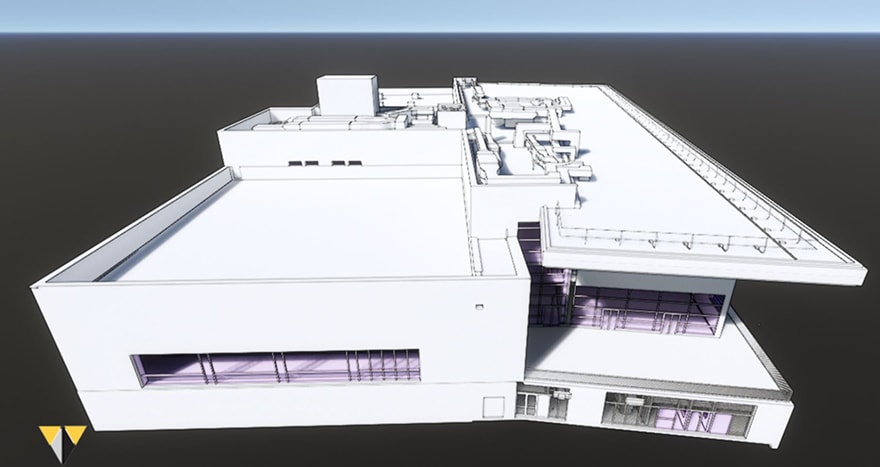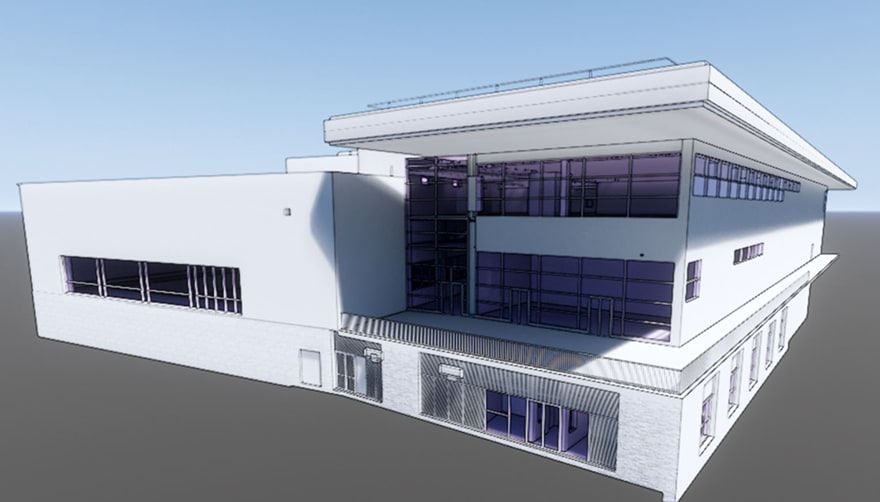- Client: University of Warwick
- Lead Contractor: Willmott Dixon; Lead architect: Space & Place
- BIM Tools: Autodesk Revit, 4Projects Viewpoint
The multi-million pound project, due for completion in 2019, will replace the University of Warwick’s existing sports facilities with a new sports hall, swimming pool, fitness suites, climbing and bouldering walls, flexible studio spaces, plus squash courts, outdoor 3G sports pitches and netball courts.
The Sports Hub will be a key component in the university’s plan to create the “most physically active campus community in the UK by 2020”.
The project started out “BIM lite” with only the requirement for consultants and Willmott Dixon to carry out design coordination and clash detection and to use a Common Data Environment. One high-tech innovation is the IFC viewer Viewpoint for 4Projects that allows site teams to view the federated model.
Simon Graham, digital engineer at Willmott Dixon, told BIM+: “Our site team is very tech savvy. The main benefit was to have another reference to augment construction drawings and provide a greater understanding of complex connections or interfaced components.”

All information is being embedded into an Asset Information Model in COBie format
Towards end of 2017, after groundworks were completed and construction of the frame was underway, Willmott Dixon and the consultant team were contracted for an additional sum of works to backfill the BIM model with all the data needed to maintain assets and manage the estate.
“Because of the tight build schedule, we had to be fluid with the BIM process,” says Graham. “Our customer had developed a suite of BIM documents, including accurate employer’s information requirements and asset registers, which has been a real help.”
The list of systems to be monitored and maintained included hot and cold water, security systems and fixed furniture. The consultant team was asked to advise on which maintainable components could be added into different systems, for example, boilers and radiant panels in the central heating and water system.
The client requested all the site services to be modelled, including access via manhole covers, and below ground gas and electricity supplies, to make it simpler to plan and coordinate any future building work nearby.

Willmott Dixon and the consultant team were contracted for an additional sum of works to backfill the BIM model with all the data needed to maintain assets and manage the estate
All information is being embedded into an Asset Information Model in COBie format and Uniclass 2015 classification. Additional classification data will be added linking certain components to the SFG20 standard for building maintenance.
One upcoming challenge is to update component data that is being input by the consultants to match the actual items installed in the building. “If consultants gather all the data for a certain component and it’s not what’s installed it would be a waste of time, so there is understandable hesitation to add that in,” says Graham.
“It is likely we will do as we have in the past and ask our supply chain partners to fill out the spreadsheets with component data, and then link it to the BIM model using a software plug-in for Revit, like Ideate BIMLink.”
Post handover, the facilities management team plans to link the data to its CAFM system. The university is also eyeing the possibility of equipping maintenance teams with mobile devices so they can access the BIM model through a field management system.
Comments
Comments are closed.












This was a great project to work on, we designed, manufactured and installed sections of precast retaining walls for the substructure for the hub. The retaining wall sections were designed and modelled using Tekla Structures, the sad thing is that you can’t see our walls anymore, as they are buried under an earth bank!